There are 11 metropolitan areas in South Africa with a population of half a million or more. Of these, East London shares the distinction, along with Port Elizabeth, of having the highest proportion of suburban names with Scottish connections. The picture here of East London Town Hall is via
Wikipedia.
Official suburbs and other localities with names that are definitely or most probably of Scottish origin are:
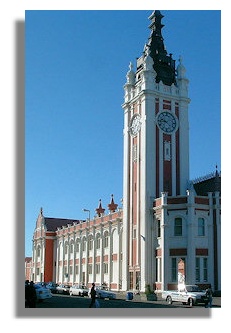
Of the names of the 124 suburbs in the East London-Mdantsane-Gonubie area, 20 (16.1%) can be found in Scotland or are based on Scottish family names. Of course, some of the names are used in other parts of the British Isles as well, but at least 12 of them (9.7%) are unique to Scotland, or are readily identifiable with places in Scotland that are based on the same names.
- Abbotsford (Scottish Borders, the name of the residence of Sir Walter Scott) though Abbotsford is also the name of a village in West Sussex, England. Considering the popularity of this place name around the world, the chances are very high that the East London suburb, like its counterparts in many other cities, recalls Sir Walter Scott's residence (pictured here).
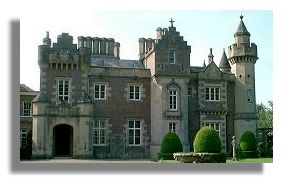
- Bonnie Doon (Aberdeenshire, spelt Bonnie Doune). The bridge over the river Doon in Alloway, Ayrshire has become famous as the Brig o' Doon (seen here) because of Robert Burns. The fact that Ayr Place is located in Bonnie Doon strongly suggests that the name of the East London suburb is a reference to the river Doon in Ayrshire rather than the place in Aberdeenshire. The only other city in the English-speaking world that has a neighbourhood with the same name is Edmonton in Canada, which took its name from the homestead of Albertan Premier Rutherford, who had Scottish ancestry.
- Braelynn, Braelynn Heights, Braelynn Hills and Braelynn Industrial - Braelynn may be a made-up name but certainly sounds Scottish. The element 'brae' (pronounced bray) is a Scots word meaning a hill or hillside, while 'lynn' may refer to a waterfall or the pool into which it plunges. The Scots word 'linn' is a blend of Gaelic 'linne' (a pool) and Old English 'hlynn' (a torrent).
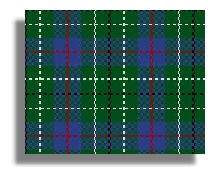
- Duncan Village - although there are no places in Scotland with this name, Duncan is an ancient Scottish family name. The Duncan clan (see tartan here) is descended from the medieval earls of Atholl, the name being an anglicisation of Donnachadh, from Gaelic donn (brown) and cath (war), thus meaning 'brown warrior'. Duncan Village was named in honour of Sir Patrick Duncan (1870-1943), South African politician, who was born in Scotland and who served as Governor-General of the Union of South Africa from 1937 to 1943 (Wikipedia article on Patrick Duncan (Governor-General), retrieved in January 2010). Sir Patrick was born at Fortie, Aberdeenshire; he was the first South African citizen to be appointed Governor-General of the Union (Clan Duncan Society).
- Glendevon (Perth & Kinross and West Lothian).
- Lennox Estate - there is a Lennox Tower in the City of Edinburgh, Lennox Plunton in Dumfries & Galloway, Lennox Forest and Lennoxtown in East Dunbartonshire (seen below, from Campsie Fells) and Lennoxlove in East Lothian, all based on this Scottish surname.
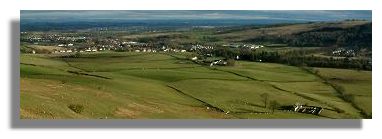
- Morningside (Dumfries & Galloway, City of Edinburgh, North Lanarkshire and Perth & Kinross).
- Panmure (Panmure Gardens and Panmure Testimonial in Angus). According to Dr Keith Tankard, the name of this East London neighbourhood honours the second Lord Panmure (11th Earl of Dalhousie), who was Secretary of State for War during the latter part of the Crimean War, serving under Lord Palmerston. Lord Panmure was born at Brechin Castle in Angus, Scotland. Panmure is probably the oldest Scottish place name in East London. Today it is a vaguely defined neighbourhood and the name of a suburban railway station but according to some historians, the name earlier referred to what is now the CBD, in the days when the centre of East London was located on the West Bank of the Buffalo River.
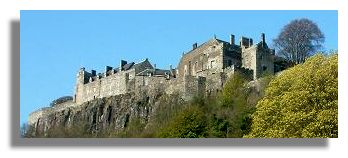 Stirling (Aberdeenshire and Stirling). The Wikipedia article on Stirling High School, East London provides a detailed explanation of the origin of the name of this suburb. "The name Stirling is an interesting story on its own, and that was researched by Mr Max Phillips, a prominent business man in East London at the time, and also the first Chairman of the Commercial High School Committee, who wrote a weekly column in The Daily Dispatch. He undertook to find out exactly why the area is called Stirling. He recorded his findings in his article in The Daily Dispatch of 9 September 1985. The area of Stirling was farmland bought by Mr Julius Sparg, and while the deed of transfer of the land was recorded in 1935, he later named it the Stirling Estate, naming it after the passenger liner Stirling Castle, that was built in 1936, when that ship called at East London on her maiden voyage. The Stirling Castle was named after the real Stirling Castle that is to be found in Stirling in Scotland which many Stirling staff members and past pupils have visited over the years." (Wikipedia article on Stirling High School, East London, retrieved in November 2011). The Stirling Castle was one of a fleet of passenger and cargo liners operated by the Union Castle Line between Britain and South Africa. Nearly all the roads in the suburb of Stirling are named for Union Castle liners that called in at East London. Of these, four were named after castles in Scotland (Armadale, Dunbar, Roslin and Stirling), six after castles in England (Arundel, Bamburgh, Carisbrook, Kenilworth, Sandown and Sandgate) and one after a castle in Ireland (Galway).
Stirling (Aberdeenshire and Stirling). The Wikipedia article on Stirling High School, East London provides a detailed explanation of the origin of the name of this suburb. "The name Stirling is an interesting story on its own, and that was researched by Mr Max Phillips, a prominent business man in East London at the time, and also the first Chairman of the Commercial High School Committee, who wrote a weekly column in The Daily Dispatch. He undertook to find out exactly why the area is called Stirling. He recorded his findings in his article in The Daily Dispatch of 9 September 1985. The area of Stirling was farmland bought by Mr Julius Sparg, and while the deed of transfer of the land was recorded in 1935, he later named it the Stirling Estate, naming it after the passenger liner Stirling Castle, that was built in 1936, when that ship called at East London on her maiden voyage. The Stirling Castle was named after the real Stirling Castle that is to be found in Stirling in Scotland which many Stirling staff members and past pupils have visited over the years." (Wikipedia article on Stirling High School, East London, retrieved in November 2011). The Stirling Castle was one of a fleet of passenger and cargo liners operated by the Union Castle Line between Britain and South Africa. Nearly all the roads in the suburb of Stirling are named for Union Castle liners that called in at East London. Of these, four were named after castles in Scotland (Armadale, Dunbar, Roslin and Stirling), six after castles in England (Arundel, Bamburgh, Carisbrook, Kenilworth, Sandown and Sandgate) and one after a castle in Ireland (Galway).
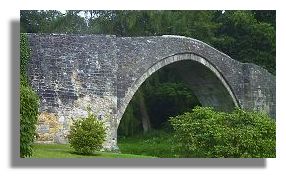
It is possible that some of the following suburbs and neighbourhoods may also have a direct or indirect Scottish connection, but these names are more commonly associated with other parts of the British Isles:
- Highgate (Dumfries & Galloway and North Ayrshire) but far more common in England and is also found in Wales.
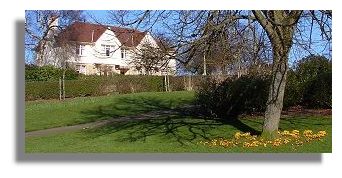
- Newlands (Aberdeenshire, Angus, City of Glasgow, Dumfries & Galloway, East and South Ayrshire, East Dunbartonshire, East Lothian, Highland, Moray, Perth & Kinross, and Scottish Borders) also all over England. The illustration here is of Newlands Park in Glasgow.
- Parkside (Aberdeenshire, North Lanarkshire, and Perth & Kinross) also in England and Wales.
- Rosemount (Aberdeen City, Perth & Kinross and South Ayrshire) also in England and Ireland but less commonly than in Scotland.
- Wilsonia and New Wilsonia are named after the Wilson family who resided in the area for many years (Raper, 1989, p. 588). Wilson is a very common family name in Scotland and England, resulting in many places in both countries that use this name. The Scottish list includes Wilsonhall (Angus), Wilson Burn and Wilson's Pike (Scottish Borders), Wilson's Noup (Shetland Islands) and Wilsontown (South Lanarkshire). The English list is even more numerous. The Scots Wilsons are a sept of Clan Gunn and now have their own family tartan.
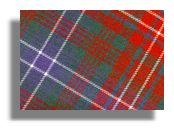
A final category of suburban names comprises places that can be found in Scotland, or that are based on Scottish family names but which, in East London's case, definitely or most probably have no connection with Scotland.
- Gately - there is a Gately Burn and Gately Rig in the Scottish Borders, the only occurrences of Gately as a place name anywhere in the British Isles. As a surname, the name is held to be of Irish or English origin according to the Ancestry.com website or of Scottish origin according to the House of Names Heraldic website. The suburb was actually named after the owner, John Gately, first chairman of the Board of Municipal Commissioners, serving from 1873 (Raper, 1989, p. 174). John Gately was born in Roscommon, Ireland, in 1829 and came to the Cape Colony in 1851 with the 60th Rifles (Dr Keith Tankard, Encyclopaedia East London). The connection is therefore with Ireland and not Scotland.
- West Bank (East Lothian and Perth & Kinross; also Angus, spelt Westbank) also in England and Wales. The name of this East London suburb is purely descriptive of the fact that it is located on the west bank of the Buffalo River.
Streets and roads with Scottish names can be found throughout the city and suburbs, perhaps the most significant being Argyle Street in the Central Business District. This street was named in 1877 "to commemorate the recent arrival of a party of Scottish settlers. There is a street of similar name in Glasgow -- a variation on the spelling Argyll which is a county in Scotland." (www.eastlondon-labyrith.com/history/argyle-street.jsp) It may interest South African readers to learn that, as far as can be ascertained, East London is the only city in South Africa that has no suburbs with Afrikaans or Cape Dutch names. Founded by the British in 1847, in a part of South Africa that had never been colonised by the Dutch, East London proved to be a natural 'magnet' for British (including Scots) immigrants and traders. The city initially developed along lines very similar to cities in Australia and New Zealand that were established around the same time (e.g., Adelaide, Melbourne, Auckland, Christchurch and Dunedin) but on a smaller scale. The other sizeable group of pioneers in nineteenth century East London and its hinterland were the Germans. Acknowledgments:
- Ancestry.com
- Clan Duncan Society.
- East London Street Plan, 2001 (MapStudio, Johannesburg).
- Google Maps and Maplandia.com for the names of some of the newer suburbs.
- The House of Names Heraldic Website.
- Raper, P.E. (1989). Dictionary of Southern African Place Names (Second Edition). (Jonathan Ball Publishers, Johannesburg).
- Scarlett, James D. (1975). The Tartans of the Scottish Clans. (Collins, Glasgow and London).
- Tankard, Keith, Encyclopaedia East London, Knowledge4africa website
- Websites, place name gazetteers and published Ordnance Survey maps of British and Irish cities, towns, villages and counties.
© Ian Kendall
If you wish to contact Ian about his research, his e-mail address is ian.kendall1@bigpond.com.
Melbourne, Australia, November 2004.
Revised December 2011.



